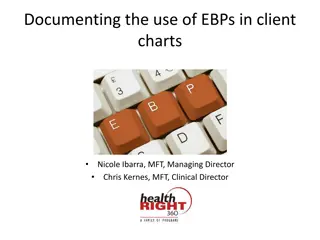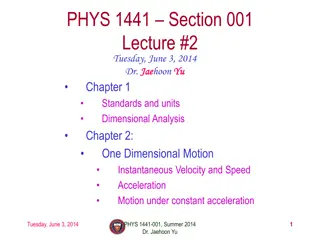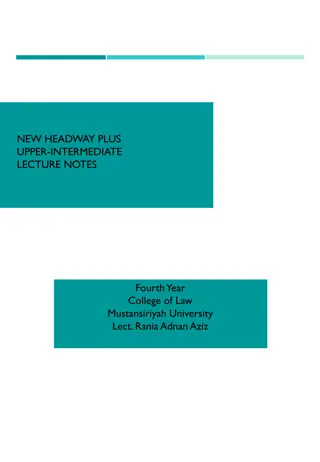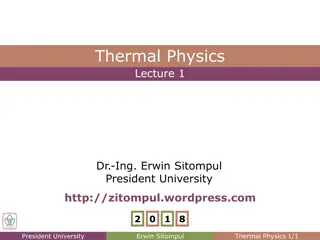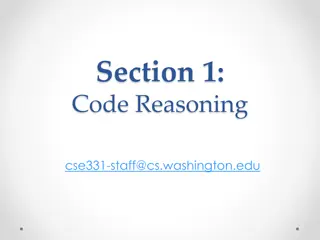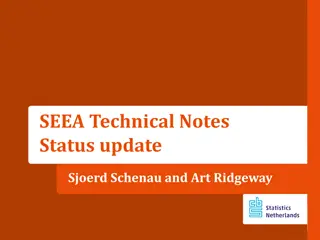Lecture Notes
In statistics, the five number summary and outliers play a crucial role in understanding the distribution of data. The summary includes minimum, first quartile, median, third quartile, and maximum values, providing insights into central tendency and spread. Outliers, identified using the interquartile range, represent data points that significantly deviate from the rest. Box and whisker plots visually represent these summary statistics, aiding in the visualization of data distribution and outlier detection.
Download Presentation

Please find below an Image/Link to download the presentation.
The content on the website is provided AS IS for your information and personal use only. It may not be sold, licensed, or shared on other websites without obtaining consent from the author.If you encounter any issues during the download, it is possible that the publisher has removed the file from their server.
You are allowed to download the files provided on this website for personal or commercial use, subject to the condition that they are used lawfully. All files are the property of their respective owners.
The content on the website is provided AS IS for your information and personal use only. It may not be sold, licensed, or shared on other websites without obtaining consent from the author.
E N D
Presentation Transcript
Lecture Notes Five Number Summary, Outliers, Box and Whisker Plot OER www.helpyourmath.com
Five Number Summary The common measures of location are quartiles and percentiles. Quartiles are special percentiles. The first quartile, Q1, is the same as the 25th percentile, and the third quartile, Q3, is the same as the 75th percentile. The median, M, is called both the second quartile and the 50th percentile. Note: To calculate quartiles and percentiles, the data must be ordered from smallest to largest. For example, consider the following data, ordered from smallest to largest: 1; 1; 2; 2; 4; 6; 6.8; 7.2; 8; 8.3; 9; 10; 10; 21.5 the median is between the seventh value, 6.8, and the eighth value, 7.2. To find the median M, add the two values together and divide by two: 6.8+7.2 2 The median M or second quartile Q2 is 7. The lower half of the data are 1, 1, 2, 2, 4, 6, 6.8. The middle value of the lower half is 2, which is part of the data, is the first quartile Q1. The upper half of the data is 7.2, 8, 8.3, 9, 10, 10, 11.5. The middle value of the upper half is 9. The third quartile, Q3, is 9. = 7
It is very easy to get min and max in the data set from the example. Min = 1 and Max = 21.5 Therefore, we can get: Min 1 Q1 2 Median 7 Q3 9 Max 21.5 (we don t talk about outliers now, but we will talk about outliers later). Conclusion: Five Number Summary: Min, Q1, M(Q2), Q3 and Max
Outliers The interquartile range (IQR) is a number that indicates the spread of the middle half or the middle 50% of the data. It is the difference between the third quartile (Q3) and the first quartile (Q1). IQR = Q3 Q1 A value is suspected to be a potential outlier if it is less than (1.5)(IQR) below the first quartile or more than (1.5)(IQR) above the third quartile. Usual Minimum value = Q1 - (1.5)(IQR) Usual Maximum value = Q3 + (1.5)(IQR) We can get : IQR = Q3 Q1 = 9 2 = 7 Usual Minimum value = Q1 - (1.5)(IQR) = 2 1.5 x 7 = - 8.5 Usual Maximum value = Q3 + (1.5)(IQR) = 9 + 1.5 x 7 = 19.5 U Min Min Q1 -8.5 1 2 M 7 Q3 9 Max 10 U Max 19.5 Outlier 21.5 We can see 21.5 is an outlier.
Box and Whisker Plot In a box and whisker plot, we draw a box from the first quartile to the third quartile. A vertical line goes through the box at the median. The whiskers go from each quartile to the minimum or maximum. -8.5 1 2 7 9 10 19.5 21.5 U Min U Max Outlier
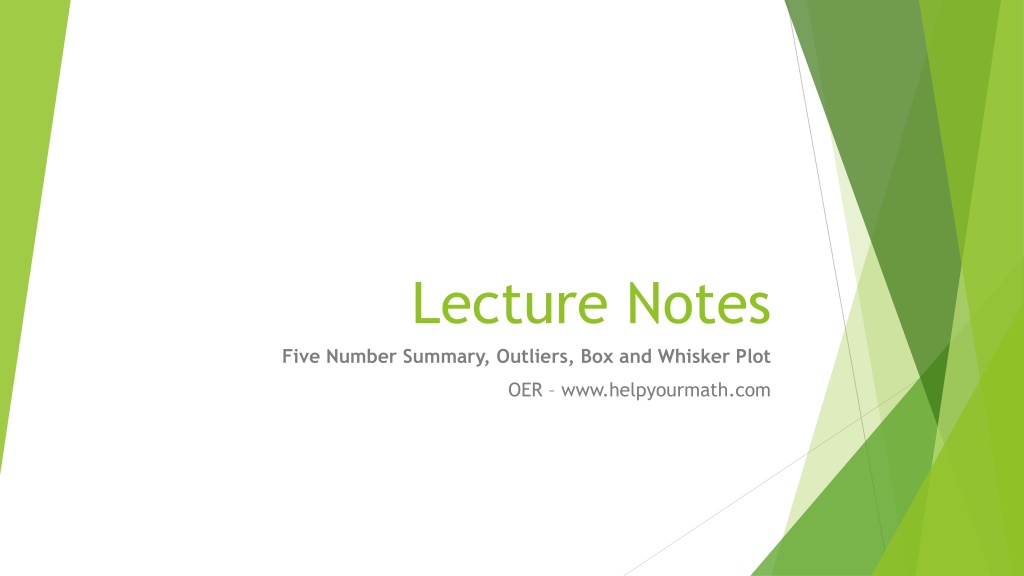
 undefined
undefined







